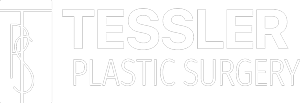One of the critical stages after tummy tuck surgery is recovery. It is important to give the body ample time to heal. The duration of healing that one patient takes may differ from one individual to the other. This may be due to differences in anatomy, age, health status, and so on. As much as these differences exist, recovery should be fast, smooth, and complete without any internal, or external interference. While doing your research on the cost of this treatment, it is important that you include recovery supplies. These are meant to assist the person in recovery. In other terms, they make the recovery process easier. This article contains several recovery supplies that will help during the recovery process.
1. The Right Clothing
While in recovery, your surgeon will advise you to always dress in suitable clothing that favors the recovery process. Such clothes should be less fitting, at least twice your original size, soft, and very comfortable. They include a loose dress, sweatpants, and a baggy shirt. When you shop for these earlier enough before surgery, you will have an easier time recovering.
2. Lifting Equipment
Lifting equipment makes work easier. It can either be used to lift or lower loads around the house. This supply is essential to a person’s under-recovery because it limits unnecessary bending, and stretching which might cause harm to the wounds and incisions. Tummy tuck surgery can reposition your abdominal tissues which will, in turn, affect the nerves located within the abdomen. While recovering, it is important to avoid causing any distress to the abdomen, which includes regular bending and stretching for a fast, and complete recovery.
3. Abdominal Compression Binder
An abdominal compression binder holds the abdominal contours in position. It is designed to help reduce psychological stress, swelling, and postoperative pain by preventing the separation of the abdominal walls also referred to as dehiscence. After a tummy tuck, the abdominal walls and tissues naturally produce fluids that may accumulate and become trapped. These fluids cause swelling, and discomfort that prolongs the recovery process. Abdominal compression binders help the body reabsorb such fluids as the skin contracts and adjusts to the new contours.
4. Pillows
After surgery, most of your time will be spent resting, sleeping, or relaxing. To effectively enjoy this, pillows will be necessary to provide more comfort. They are generally soft and come in different shapes and sizes, all with a purpose to fit your needs. Pillows mainly help to elevate the back, head, and feet by placing them underneath.
5. Light Healthy Meals and Snacks
Post-tummy tuck surgery, the chances that you would regularly cook are very minimal. Otherwise, you would only be able to prepare light meals that take less time to cook. When you stock light healthy meals, especially those rich in proteins, and snacks before going into surgery, it will save you a lot of trouble during the recovery period. Such foods are stomach-friendly, very easy to digest, and are satisfying, just like normal food. They are less costly and can stay for long without going sour.
6. A Water Bottle
Water is very important to the body. Other than the fact that it keeps our bodies hydrated, it acts as a catalyst to the recovery process. After tummy tuck surgery, the body’s immune system is usually weak which creates room for attack from bacteria, fungi, and viruses that may cause infections. When you drink plenty of water, it helps to keep the body safe, away from infections, and it helps to eliminate toxins present in the body left behind by the anesthesia.
7. Slide-on Shoes
These types of shoes are backless and open-toed. They usually have single, or multiple straps with the majority having none at all. They are easy to put on since no effort is needed. Examples include flip-flops and sandals.
8. Ice Packs
Ice packs help during the early stages of recovery. Post-tummy tuck, the abdomen will be swollen, bruised, and sore. Ice packs can immensely help to reduce the rate of swelling, pain, and inflammation by relaxing the muscles and tissues underneath. They are recommended for use at least three to four times a day for about 10-30 minutes.
9. Pain Relievers and Antibiotics
Pain reliever medicines help reduce the pain felt after surgery, whereas antibiotics help prevent infections and diseases. In most cases, these drugs are prescribed by the surgeon. To be able to know the appropriate ones for use, inquire more from the surgeon during your consultation.
10. Stool Softeners
Stool softeners are otherwise referred to as laxative drugs. They help in excretion, a process in which metabolic waste is eliminated from the body, by wetting and softening the stool. In other terms, they help prevent constipation with regular use. Examples include lactulose, lactitol, and magnesium citrate.
11. Bandage and Cotton Wool
Bandages and cotton wools are used to clean and dress the wounds. They are needed in bulk. Earlier purchases of them would reduce the workload post-surgery. Although there are several types of bandages such as adhesive, liquid, gauze, and compression bandages, the best type that will help speed up your recovery should be recommended by the surgeon.

